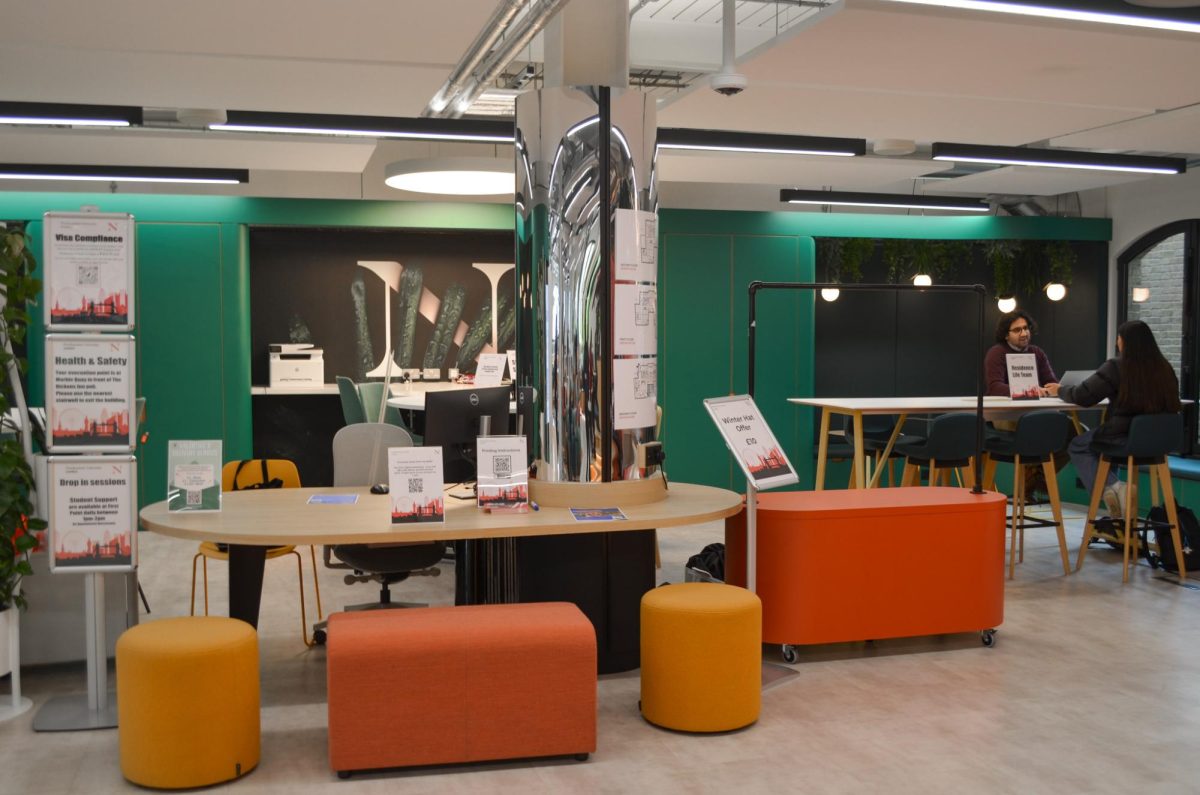By Danielle Capalbo, News Staff
The city is plenty of things:’ smoggy, perhaps. Polluted and accelerated. Dirty. Crowded.
At a cursory glance, though, the word ‘green’ may not rush to mind.
As one of the most culturally revealing adverbs of our generation, ‘green’ has been affixed to practically everything:’ automobiles, shopping bags, underwear and bathing suits.
Add cities to the list, thanks to the ‘green urbanism’ movement. Designed to minimize the impact of buildings on the environment, ‘green urbanism’ originated overseas in cities like Helsinki, Finland. As it picks up steam this side of the ocean, Boston architects, too, are getting serious about sustainability, said Lucy Maulsby, assistant professor of architecture.
At Boston Green Building, the city’s premiere green contracting company, things are green from start to finish, said business manager Eric Johansmeyer. Even the company’s Allston headquarters uses a Freewatt eco-friendly heating system.
And on Northeastern’s campus, the West Village F building captures its rainwater run-off to later irrigate nearby lawns, said George Thrush, professor and director of the School of Architecture.
There, sustainability is tops.
‘It’s a huge part of our curriculum, and increasingly so,’ Maulsby said, and referenced another assistant professor, Kiel Moe, author of ‘Integrated Design in Contemporary Architecture.’ Here he teaches a course called Integrated Building Systems, devoted to understanding and applying the concept of a building as part of a greater system.
‘It’s looking at the total effect of what our students design,’ Thrush said. ‘Not just asking, ‘Are there photovoltaic cells on the roof?’ or, ‘Is it using geothermal energy?’ but rather, ‘In total, is the whole system efficient?”
For Nicole Fichera, a junior architecture major, ‘green urbanism’ doesn’t just mean a handful of specific, green-oriented projects that stand on their own.
‘The trend is toward being sustainable in all projects,’ she said. ‘It’s becoming such a widespread concern that it’s less of a trend and more of a general way of thinking about design.’
Architecture has been on a trajectory course toward sustainability since the 1998 inception of the Leadership in Energy and Environmental Design (LEED) certification, a set of environmentally-friendly construction standards.
‘Certainly responsible for a lot of pollution and waste that we’re currently experiencing is the way things are built to the kinds of materials used to the lack of energy efficiency,’ Maulsby said.
Now, she said, buildings aren’t designed anymore to trap mold-causing heat or air-conditioning, but to circulate natural air, almost like breathing organisms.
‘In part, it’s a response to larger cultural trends in awareness,’ she said. ‘As we are more alert to issues of the environment and sustainability, in how we eat and how we consume energy, likewise, that’s going to emerge as a part of architectural discourse, and architects are going to increasingly understand buildings not as isolated structures but as part of an interconnected system.’
For instance, Thrush said, this semester, the school is working with planners in New Bedford to get people out of the suburban periphery and into the downtown area ‘- a settlement pattern that itself will operate sustainably by lowering carbon emissions from cars, he said.
That’s got a lot to do with the fact that cities, though it seems unbelievable, are actually ideal canvases for environmentally friendly projects, he said.
‘One of the big complications in the whole green argument is, not a lot of people realize one of the greenest cities in the world is probably New York,’ Thrush said. ‘There, you have a bunch of people living really close together, using public transportation and gaining a lot of efficiency living right on top of each other and using comparatively little land to how many people there are.’
Another complication, Thrush said, is that the depth of the word green is often misunderstood.
‘They still think of green like, L.L. Bean and hiking,’ he said. ‘And of course, that’s good ‘- we all want to preserve nature and go kayaking. But the real issue is, ironically, that you have to build very densely.’
There’s even an upshot to the high concentration of waste and garbage in big cities, Thrush said, since more people means more money to fund effective waste treatment facilities.
‘The truth is, of course, you would be much more wasteful out in the countryside on a per-person basis because you couldn’t afford to build a sewage treatment plant and your waste would go completely unadulterated into a river or stream or whatever is nearby,’ Thrush said. ‘Whereas New York, Chicago and Boston can build systems that almost completely solve the waste problem, and produce water that is drinkable after all of this.’
The real challenge for green urbanism moving forward will be matching environmental performance to economic performance ‘- tax incentives for conscious architects, maybe, or punishment for those who don’t follow eco-friendly standards. Ultimately, he and his colleagues, like Maulsby, see it as more than an ephemeral green trend.
‘The line between what is architecture and what is green architecture will become increasingly blurred,’ she said. ‘It will become a new way to design.’








